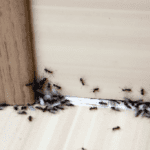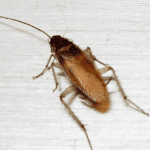Household waste: What should not end up in the sewers.

May 25, 2023
/
Household waste: What should not end up in the sewers.
Household waste: What should not end up in the sewers.
Learn which household waste shuld not end up in the bathroom sink and drains and protect the environment and your home. Every action performed every day is capable of affecting the environment in a more or less effective way. A simple automatic gesture, such as pulling a tampon or a pile of hair into the toilet, can have "disastrous" consequences, not only in terms of water and structural elements in terms of the condition of the plumbing inside the bathroom, but also sustainability, since every sewer has a direct connection to the seas and rivers. In this context, the alarm was sounded by Greenpeace Australia, which, through statements by the president of Hausman Technology Presentations, Steven J. Hasman, wanted to draw the attention of residents to a more conscious use of drains in their homes. So let's see what are the most common "mistakes" (aka waste) that should not end up in the toilet bowl.- Make-up removal trays and wet wipes. The bathroom for makeup removal products cannot be equipped with makeup removal trays or wet wipes. While the former are mainly made of disposable cotton, wet wipes have a mixture of plastic, polyester and cellulose fibers inside them, which makes them light and seemingly harmless, but they are not. Specifically, both in the first and second cases, however, their use poses risks both for the pipes, which are at risk of clogging, and for the environment. A viable and, in the long run, much cheaper alternative is to get reusable makeup remover pads (washable after use) and reusable microfiber cloths.
- Hair. Although it is an organic material, hair also contributes to the pollution of the seas and the clogging of the household water system. In what way; Since they have a very solid structure, it is almost impossible for them to break during their "journey" through the pipes. As such, they are potential filaments that contribute to the formation of harmful aggregates when they come into contact with other materials in sewage or oceans, such as plastic.
- Dental floss. The material from which dental floss is made is not biodegradable. This means not only that it can pose a risk to flora and fauna in all waterways, from seas to oceans, but that its accumulation with other litter can create a potentially deadly mixture for the aquatic system.
- Cat litter. Although it is always feces and urine, throwing cat litter down the drain can, in the long run, cause a problem. The sand, in fact, is made of a mixture of sand and clay, which has the task of containing the odors and moisture, could leave traces.
- Oils & fats. They look like liquid, thick, and harmless stuff, but fats and oils are actually the number one enemy of pipes. In contact with certain temperatures they tend to solidify, thus preventing the passage of water and creating a real traffic jam.
- Detergents & other cleaning products. Similarly, the detergents that leaflets for cleaning countries or washing floors are rich in chemicals and therefore harmful.
How to effectively clean Laminate floors in companies
In this case, the advice does not favor plant-based ecological products. It is important to know where your household waste ends up and of course what effect this can have on both the pipes and the planet. If, now that you have a clear picture, you can implement a more ecological plan, reducing your waste, not throwing things in the basin that may aggravate the situation and of course, choosing alternative solutions. Read hundreds of articles that will answer any question about #cleansecta by clicking here.Recent Posts
cleansecta.gr
Mosquito protection measures
cleansecta.gr




